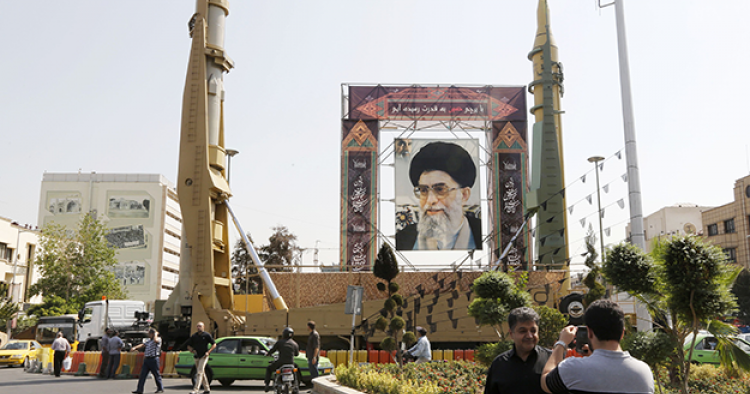Read the full article (PDF) published by Middle East Studies at Marine Corps University.
There can be no doubt that despite much speculation about Washington’s long-term intentions, the United States remains the most powerful political-military actor in the Middle East. In that context, the most powerful adversary of the US in the region is the Islamic Republic of Iran. A self-declared enemy of the US, the hardliners inside the Iranian regime are busy weighing their options as they seek to maximize their influence in the Middle East and beyond. This Iranian pursuit of power is occurring on different levels and involves different Iranian regime actors. However, there can be no doubt that one of the most significant actors—if not the most significant—is the Iranian military and specifically the Islamic Revolution Guards Corps (IRGC).
The Debate About the Iranian Military
n the United States, after 16 years of ongoing military operations in the Middle East, American military planners are confronted with a simple but powerful reality: that US national security interests will force Washington to remain engaged in Middle Eastern affairs in the foreseeable future. On an operational level, military engagement against anti-American forces will continue to be required in some of the most sensitive spots in the region, including in Afghanistan, Iraq, Syria, and Yemen.
In this context, the US is not confronting a single conventional military power (as, for example, with Saddam Hussein’s Iraq). Instead, the US is faced with the prospects of cases of “hybrid war,” which is basically a combination of conventional military assets, terrorist/militia operations, and cyber warfare and disinformation media campaigns. And here, among America’s foes, the Iranian threat is unique. The Iranians know full well that in terms of conventional military capabilities they are woefully behind not just the United States but also other US allies such as Saudi Arabia, Israel, and the United Arab Emirates. Most notably, Iran’s Air Force and Naval capabilities are no match for its adversaries. In fact, one can argue that Iran really has only two key military assets: its “asymmetric war fighting” and its growing missile arsenal. Nonetheless, military planners in Tehran are known to exploit an array of military tools to bolster Iran’s ability to project power.
Image: ATTA KENARE/AFP/Getty Images
The Middle East Institute (MEI) is an independent, non-partisan, non-for-profit, educational organization. It does not engage in advocacy and its scholars’ opinions are their own. MEI welcomes financial donations, but retains sole editorial control over its work and its publications reflect only the authors’ views. For a listing of MEI donors, please click here.












